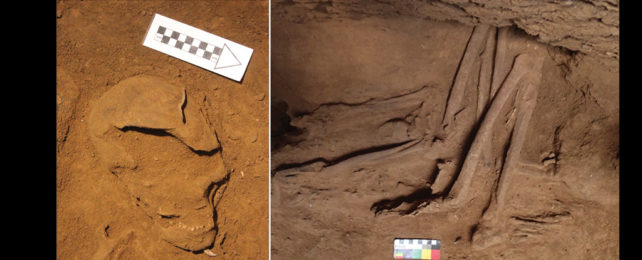Burials in Indonesia Offer Clues to Migration
Scientists have discovered three bodies on an Indonesian island which provide an insight into the movements of early humans, thousands of years ago.

The bodies, found across three burial sites, form part of the excavation and analysis of 50,000 bones unearthed along the south coast of Indonesia’s Alor Island, which is north of Timor Leste.
The various remains found beneath rock shelters in an area named Tron Bon Lei near Lerabain are between 7,500 and 13,000 years old.
But it’s the way they were buried which provides unique insights into how early humans moved across Southeast Asia during the Pleistocene and Holocene periods.
Studies are beginning to understand the genetic diversity of peoples within the region, which lead researcher Dr Samper Carro says can be further informed by the discovery of these bodies.
“The three quite unusual and interesting burials show different mortuary practices,” Carro says.
“They might relate to recent discoveries of multiple migratory routes through the islands of Wallacea from thousands of years ago.
“It shows how burial practices can complement data on genetic diversity from one of the current research hotspots in Southeast Asia.”
Burial practices and the talking dead
The discovery of human remains in the region began in 2014, when teams from ANU and Indonesia’s Gadjah Mada University, found a 12,000-year-old human skull buried along with several fish hooks.
More bodies were found when the team returned to the site four years later. Carro then spent several COVID-interrupted years studying the remains, with the results now published in PLOS One.
It’s the positioning of the bodies beneath the surface which provides archaeologists with insights into the different cultures that migrate through the region.
One of the bodies had its extremities intentionally removed before being buried.
Another was placed in a ‘seated’ position, while the third was lying on its side.
“Burials are a unique cultural manifestation to investigate waves of migration,” Carro explains.
Burial practices can provide scientists with insights into migratory patterns carried out by ancient cultures.
Equally, these practices may have developed locally, which is why Carro says further research to characterise mortuary practices in the region will help provide greater accuracy to her findings.
“Further research in aspects such as biomolecular anthropology, diet practices, or the types of tools used in burial rites will allow us to gather more data,” she says.
“These future efforts will provide us deeper insights to interpret the lifeways of these communities.”
